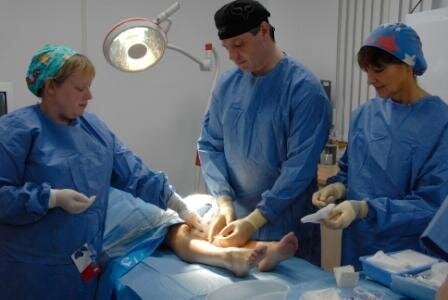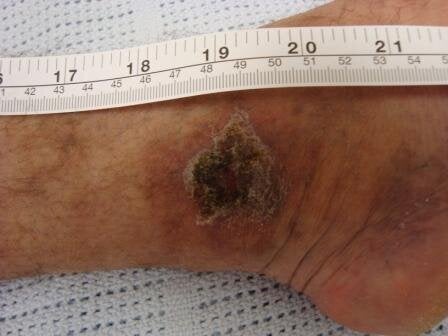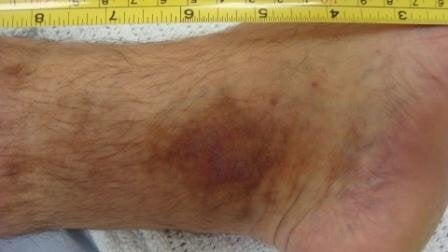Many people are not really sure what leg ulcers are. However, once you have seen one for yourself or, worse still, developed one yourself, you will never forget it. Leg ulcers are non-healing open sores of the lower leg, that need constant dressing and cleaning. For many people, they can be extremely painful and not surprisingly, they adversely affect the quality-of-life of people suffering from them, and can stop them from living a normal life.
As with many vein problems, the general public and media perception is that leg ulcers only affect the elderly, however this isn't always the case. I recently had a patient, a19-year-old boy, who came to my clinic with a non-healing sore on his ankle. When I explained this was actually a leg ulcer, he was extremely surprised having always believed the condition to be something older family members were more likely to suffer with.
As well as affecting a person's life, the impact on the economy is also worth noting. Many people chose to give up work because of the time needed each week for dressings and compression bandaging and also the embarrassment of the smell that is often associated with ulcers.

With between 180,000 - 210,000 in the UK suffering from recurring leg ulcers and 500,000 - 600,000 people in the USA, it really is a major health problem. The yearly cost of treating the condition is between £400,000 - £600,000 here in the UK and $1 billion per year in the USA. It is a problem that devours a huge amount of resources not only in nursing time, leg ulcer dressings and compression bandaging or stockings but also wastes resources in keeping people from work or active life.
However, what really shocks me is that over 50% of these leg ulcers are completely curable by a simple walk-in walk-out local anaesthetic surgical treatment.

Before Treatment

After Treatment
A hundred years ago, leg ulcers were treated by compression bandaging and dressing. Unfortunately these treatments "heal" the ulcers temporarily, but as soon as the compression and bandages are removed the ulcers start to recur. Hence temporary "healing" is not a cure.
Research in the 1990's showed that a large proportion of leg ulcers are curable by treatment to the underlying leg veins - and advances in endovenous surgery in the last decade has meant that this can now be done under local anaesthetic using pinhole incisions only.
Following these principles, the research team at The Whiteley Clinic carried out a study looking at the 12 year experience of patients with leg ulcers who had been told they were "incurable" and needed compression bandaging for life. By treating the underlying veins, results showed that 85% of the leg ulcers were cured after treatment (results published in the Journal of Phlebology).
Furthermore, work from Consultant Surgeon and Professor of Vascular Surgery Professor Ruckley showed that the cost of curing leg ulcers surgically is approximately the same as one year of dressing and compression by a district nurse.
So what is the standard treatment for leg ulcers in the UK?
Unfortunately it has still not moved on from the dressing and compression treatment so popular 100 years ago.
So why are we turning our back on the opportunity to diagnose and cure over 50% of the people suffering from leg ulcers in the UK when there is a good economic argument that it will be cheaper in the long term?
It is hard to answer this question. Without doubt the doctors and nurses providing leg ulcer services are not referring their patients for the venous duplex scans needed to highlight if patients are curable. This may be due to a lack of education or a vested interest in keeping clinics full. Clearly companies manufacturing dressings, compression bandaging and stockings also rely on an ongoing market of leg ulcers - but with a growing and ageing population there will always be a significant proportion of leg ulcers that are not amenable to surgical cure.
Whatever the reasons, the simple fact is that even using conservative estimates, approximately half of the leg ulcers currently prevalent in the UK could be cured with consequent saving of money, improvement in quality-of-life, return to normal independent life and, for some, return to work.
Medical professionals throughout the UK now need to move on from the methods of old, and realise that at this time of austerity it is a waste of resources to continue to provide patients with a temporary dressing solution for their treatable ulcers.